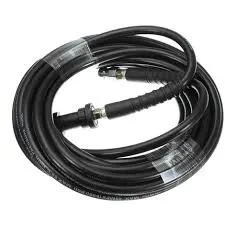12 inch culvert pipe coupler
Understanding 12 Inch Culvert Pipe Couplers A Comprehensive Overview
Culvert pipes serve a crucial role in drainage systems, allowing water to move efficiently beneath roads, railways, and other infrastructures. Among various sizes of culvert pipes, the 12-inch culvert pipe is a popular choice for a plethora of applications ranging from agricultural drainage to urban stormwater management. To ensure these pipes function effectively, couplers tailored for 12-inch diameter pipes are vital. This article delves into the significance, types, installation practices, and considerations regarding 12-inch culvert pipe couplers.
Importance of Couplers in Culvert Systems
Culvert pipe couplers are connectors that join two lengths of pipes, ensuring a secure and watertight connection. In the context of a 12-inch culvert pipe, these couplers are designed to accommodate the specific diameter and material of the pipe, which can range from PVC to metal or corrugated plastic. Proper couplers enhance the integrity of the drainage system, preventing leakage and ensuring that water flows seamlessly through the conduit.
Using couplers also facilitates easy repairs and modifications. Should a section of the culvert pipe become damaged or require replacement, couplers allow for quick disassembly and reassembly without the need to replace the entire system. In doing so, they contribute to the longevity and cost-effectiveness of culvert installations.
Types of Couplers
There are several types of couplers available for 12-inch culvert pipes, each designed for specific materials and applications
1. PVC Couplers Commonly used for PVC pipes, these couplers typically employ solvent cement for a strong bond. They are lightweight, resistant to corrosion, and relatively easy to install. 2. Metal Couplers When durability is paramount, metal couplers made from stainless steel or galvanized materials offer a robust solution. They are especially advantageous in environments where they may encounter harsh conditions.
3. Rubber Gasket Couplers These couplers use rubber gaskets to form a seal between the pipe segments. They are crucial when working with pipes that experience slight movement due to soil settling or temperature changes, as the gasket can flex, maintaining a watertight seal.
12 inch culvert pipe coupler

4. Bell and Spigot Couplers Often found in larger drainage systems, these couplers feature a bell-shaped end that fits over a spigot. This design provides a strong mechanical joint that is easier to assemble and disassemble.
Installation Considerations
Installing a 12-inch culvert pipe coupler requires careful planning and execution
. Here are key factors to consider1. Surface Preparation Ensure that the ends of the pipes to be connected are clean, free of debris and damage, so the coupler can form a proper seal.
2. Correct Alignment Accurate alignment of both pipe sections is crucial. Misalignment can lead to failures in the joint and potential water leakage.
3. Sealant Application If using PVC or other types of couplers requiring sealants, follow the manufacturer's guidelines regarding drying times and curing processes.
4. Sufficient Support Provide adequate support for the culvert pipe, especially during installation, to prevent sagging, which can disrupt flow and cause stress on the couplers.
Conclusion
A 12-inch culvert pipe coupler is an essential component in managing water flow and drainage effectively. By understanding the various types available, their installation procedures, and the importance of maintaining secure connections, stakeholders can ensure the reliability and functionality of their drainage systems. Whether for agricultural applications or urban infrastructure, the right coupler aids in accomplishing efficient and sustainable water management solutions.
-
Ultimate Spiral Protection for Hoses & CablesNewsJun.26,2025
-
The Ultimate Quick-Connect Solutions for Every NeedNewsJun.26,2025
-
SAE J1401 Brake Hose: Reliable Choice for Safe BrakingNewsJun.26,2025
-
Reliable J2064 A/C Hoses for Real-World Cooling NeedsNewsJun.26,2025
-
Heavy-Duty Sewer Jetting Hoses Built to LastNewsJun.26,2025
-
Fix Power Steering Tube Leaks Fast – Durable & Affordable SolutionNewsJun.26,2025

